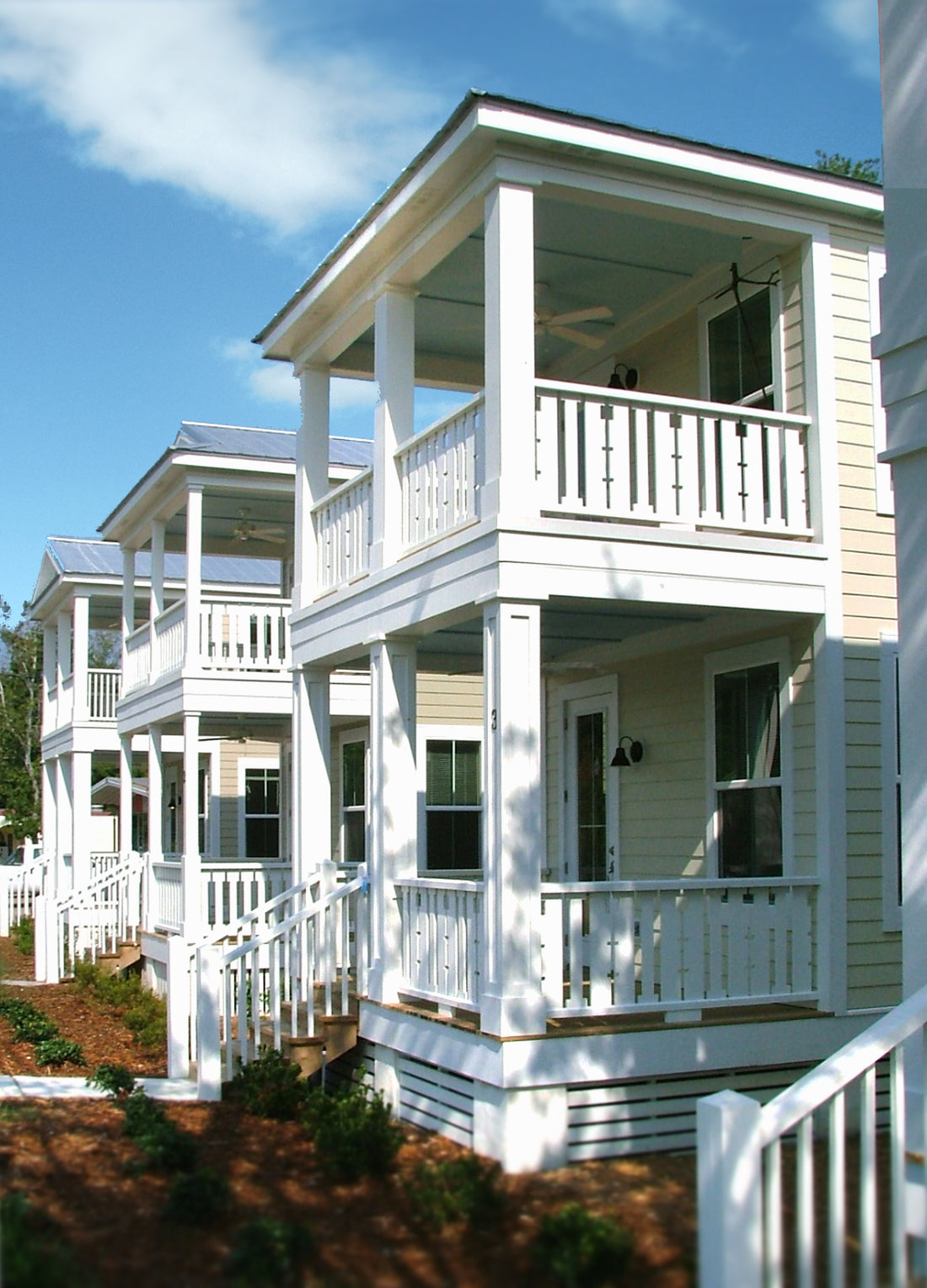The right design can turn a disadvantaged site into a premium asset.
Cottage Square is well known for its design success. The pocket neighborhood developed by Bruce B. Tolar and partners in 2011 placed fifteen cottages within a park-like setting on an infill lot in Ocean Springs, Mississippi. (Subsequent phases have grown the number of cottages to twenty-three.) The setting is so tranquil and the homes so lovable that residents pay a premium to live there, despite the location between a busy thoroughfare and an active railway.
But Cottage Square had an advantage that not all lots present: it's tucked away behind commercial frontage that buffers the neighborhood from the busy street. The project next door, the Cottages at Oak Park, had a challenge that Court Square did not: 170 feet of frontage along Government Street would be exposed to passing traffic. Thanks partly to the presence of an elementary school across the way, Government Street maintains an annual average daily traffic count of 7,700 at the point where it passes the two neighborhoods (2022 figures). How could the builders keep the homes affordable while creating a strong "presence" so the homes would avoid being overwhelmed by the street?
The answer was located in a combination of construction technique and design. The cottages were built with a combination of off-site, factory construction and conventional on-site construction techniques, to take advantage of the strengths of each. They were also limited to a width of fourteen feet. That width not only made the cottages suitable for off-site construction but also enabled the team to place five of them in a tidy row along the street. Double front porches created a ceremonial feel — a "presence" — and served to buffer the interiors from exposure to street noise. And variety was introduced in the roof shapes and porch details to maintain visual interest without losing the construction efficiency that comes from building the same home multiple times.
The result is surprising. The homes (now shifted from rental to condominium ownership) sell at above-average market values. And residents use the porches as viewing stations for the town parades that march along Government Street.
We are proud to add this house design — the Lantana — to our catalog of house plans, and we hope others will see its potential for neighborhood design, too. We imagine a row of the cottages framing a park, or even a pond or pool. Happy building! Let us know how we can help you make your project real.
* * *
For more about Cottage Square and the Cottages at Oak Park, see "The Katrina Cottage Movement — a Case Study" on the Project for Lean Urbanism.
